
The effects of climate change that we experienced in 2010 are cause for grave concern – the images ingrained in our memories of ravaged regions and lost souls still leave us shocked, shaken and helpless. The devastating heat wave in Russia, the horrifying floods in Pakistan or just recently the tsunami in Indonesia– these are probably among the most severe weather catastrophes which happened within the last year.
There are still those who say that these catastrophes cannot be linked to the change in climate and that mankind has had little or nothing to do with global warming and the effect climate change has had, and is having, on our planet. But those who believe that climate change is responsible for the effects we are witnessing by far outnumber the sceptics.
But what can we do? Some changes already seem to be irreversible. And the fruits of what we are succeeding in changing or stopping will only become evident in years, if not decades, to come.
Well, we can start by accepting that there will be many more such situations and catastrophes in the near future and that we quickly need to take some necessary steps and precautions in order to prevent the worst from happening. At this very moment there is a massive project underway in – or to put it more precisely under Mexico City – to build a 62-kilometre long tunnel 150 metres below the city’s surface with just one aim in mind: to protect the 20 million-strong metropolis against flooding and high water.
Mexico City is especially at risk because the mega city is built on a dried out lake and is gradually sinking further and further into the sandy substrate. The city itself is also surrounded by a ridge of high mountains which makes it extremely difficult – and costly – to pump the waste water out of the city and away from its inhabitants.
If nothing is done, and the heavy rainfalls during the wet season continue on such a colossal scale, then the city will literally sink in its own water. And this is what the TEO (Túnel Emisor Oriente) is designed to prevent. The tunnel will conduct the water masses away from the city in a depth of 150 metres to the lower-lying federal capital Hidalgo where they will then be processed by gigantic sewage plants which have been upgraded for exactly this purpose. The tunnel will soon be able to propel 150 m³ water per second to the nether regions, perhaps even as soon as 2012. There is even a German company from Baden-Württemberg involved in this mammoth project, which once again goes to show how highly German technology is regarded all over the globe.
So Mexico City is – for the time being at least – safe, thankfully. But where does that leave the rest of us? Our often antiquated and overburdened drainage systems are unable to cope with the downpours we have been experiencing. And you can hardly rely on sandbags and backflow flaps to stop the floods that ensue when the sewers run over, the dykes give and the rivers burst their banks. Better then to make sure that your washing machines, tumble dryers and any other possessions which you value highly are on a pedestal or other elevated place should the floods swamp your cellar. And if your cellar does one day get submerged in water you can always rely on us to dry it out again.
Prepare for the worst and hope for the best…
Our professional building dryers and dehumidifiers offer a whole range of solutions for dehumidification regardless of the scale. Take advantage of our super special offers which are currently running for new and second-hand dehumidifiers – and make sure you’re well prepared for the wet season!
TROTEC – we won’t leave you standing in the rain!
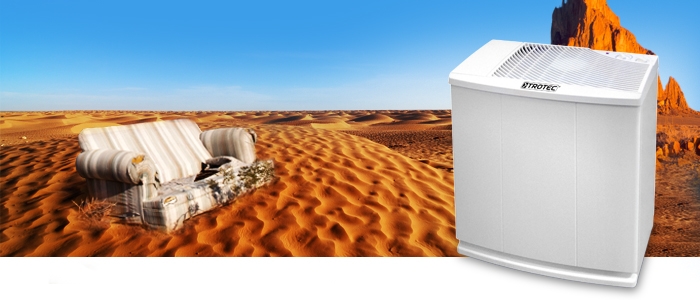

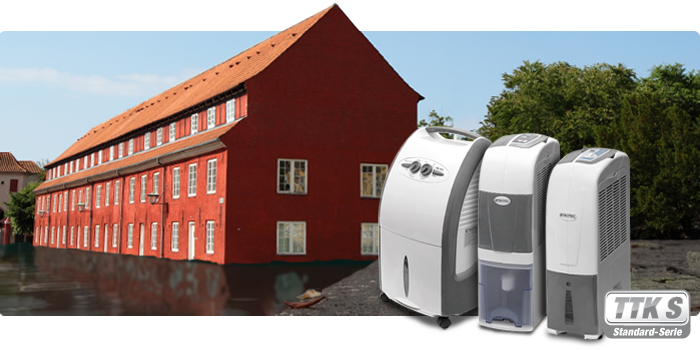
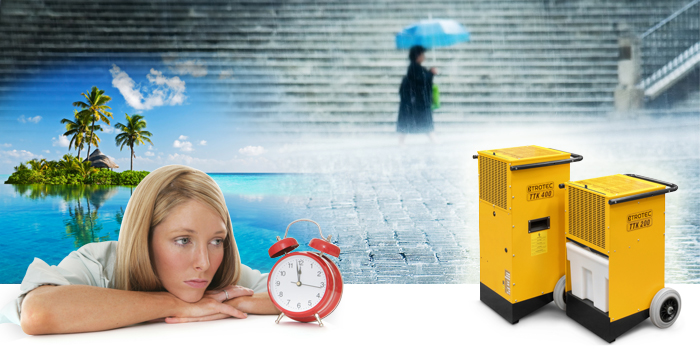
 Most of the time people don’t give much thoughts about how to air their house or apartment. During the cold and frosty months of winter at least you mind to keep the doors and windows closed to keep the valuable and costly heating energy inside the house, don’t you? But as soon as the temperature rises again no one really cares anymore… Because if it is warm outside I can open up all windows and doors to let fresh air into my apartment, so there is no problem anymore with damp basements or moist walls, right?
Most of the time people don’t give much thoughts about how to air their house or apartment. During the cold and frosty months of winter at least you mind to keep the doors and windows closed to keep the valuable and costly heating energy inside the house, don’t you? But as soon as the temperature rises again no one really cares anymore… Because if it is warm outside I can open up all windows and doors to let fresh air into my apartment, so there is no problem anymore with damp basements or moist walls, right? 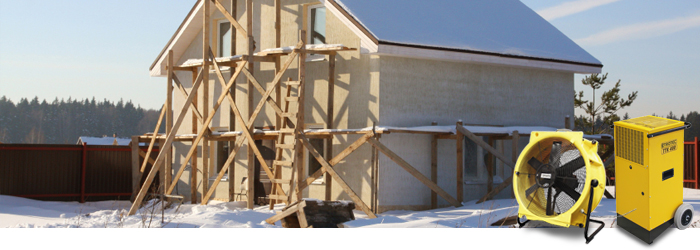

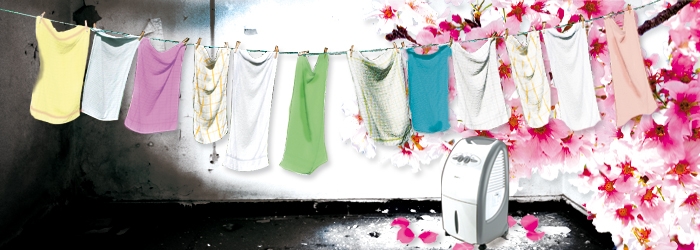 Autumn is here at last. You need only look at the calendar – or out of the window. So make the most of the last sunbeams. The days are getting shorter and shorter – and the weather isn’t going to get any better!
Autumn is here at last. You need only look at the calendar – or out of the window. So make the most of the last sunbeams. The days are getting shorter and shorter – and the weather isn’t going to get any better!


